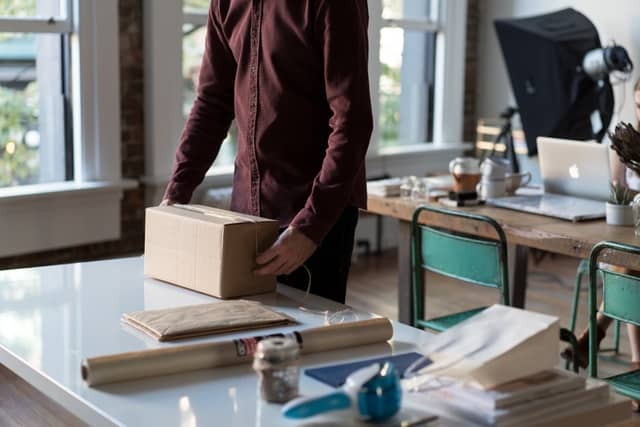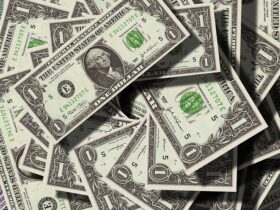No products in the cart.
The Process Of The Production Business

One of the many facets of business that very few people worry about is production. Unless you own a factory or outsource your production to a third party business, you probably don’t think about where your items come from. Many businesses simply sell a service, or they buy pre-made products and brand them with their own logo and designs so they can call them their own.
This isn’t an uncommon thing either. Plenty of businesses sell templates or unbranded products just waiting to be used. It’s also common for businesses to buy pre-assembled parts, cases or even the same components as their competitors. If you have ever browsed Amazon for an electronic device and noticed that some products look the same despite having a different brand and name. You can be sure they are both made with readily available parts and they probably work exactly the same.
In short, a large majority of electronic products you see on the market haven’t been completely manufactured from scratch. This is to save costs, speed up the production process and in some cases, to mimic a popular brand.
Pros and cons of not producing from scratch
But there’s only so much you can produce yourself. For example, unless you want to make your own screws and bolts, you’ll probably be buying them from a wholesale hardware store. Circuit boards and the other internals of an electronic device are usually fairly standard and you should be buying them from a wholesaler as well unless you need some very specific electronic components or you have the means to create your own PCBs.
The case that houses everything should be created by yourself to give your product its signature custom look. The Apple TV once looked unique, but now there are hundreds of spinoffs that try to emulate its look. The more unique your design, the harder it is to replicate. However, if you make it look too fancy then chances are you might run into problems with sturdiness or reproduction. You also don’t want to waste materials making something that doesn’t really help the look or feel of your product.
But that’s for electronics, how about other products such as toys? Since every toy has an outward appearance it makes sense to create your own from scratch. There are very few templates for children’s toys but some parts of a model or figurine (such as the hands, feet or the body) can be made from templates. Those are usually created by the production facility itself and to the specification of the company that requested they be made and not bought from a third party.
However, the tools and machinery required to do this are highly specific. Custom programmed machinery and industrial-scale 3D printing is extremely expensive and could cost your business a huge lump sum of investment. Because of this, it’s not recommended to create your own production line if you are a startup, but if you plan to repurpose a production line in the future to create different products and plan to be in the industry for a long time, then a factory could be a very worthwhile investment.
What goes into a production line?
Aside from all the staff members that you need to hire, a production line mainly consists of raw materials. Plus a storage area, the machinery itself, and then a packaging and processing line. The raw materials are usually shipped in via large trucks and vans. Then they are safely stored for later use when an employee or machine carries them over to the machines.
Once the machines have been loaded with raw materials, it is then processed in a variety of different machines. These machines are incredibly specific but can usually be programmed with a lot of attention to detail. A robotic arm can be bulky and sturdy, but it can maneuver with a lot of grace and precision if programmed properly. These types of devices are extremely expensive, but they have a long lifespan and can almost always be repaired and tuned to your liking. Not every business needs to buy new machinery and you can usually get away with buying second hand as long as you have a capable engineer available to help you refurbish it. Once you’re ready to move on and want to empty out your factory, you can simply sell all of the machinery to a third party or another startup.
To add the finishing touches, some products are usually blasted with some paint in a spraying booth. This gives toys their glossy finish, or an electronic device’s case a new coat of paint. Keep in mind that a spraying booth isn’t always used at the end of a production line, but can sometimes be used at the beginning. This just goes to show the flexibility and customization a production line can have. It’s crucial you should do your research and have a capable expert on board to tell you how things work and what the optimal ordering for your machines is.
Is a production line right for me?
If you’re a startup then the answer is no. Unless you have a lot of funds to kickstart your business or if there is absolutely no way that you can secure a contract with a third party manufacturer. You will almost always be safer to outsource it instead of relying on your own machinery. However, there are occasions when using your own factory has its advantages for a startup, such as toy production or creating a product that requires a delicate manufacturing process that can’t be trusted to a third party.
For an existing business, the answer is almost always yes. A production line offers more control of the outcome, meaning that you can tweak a product. It saves costs that would’ve been spent on outsourcing it, and you have a factory ready to go for any of your future products.

















Leave a Reply